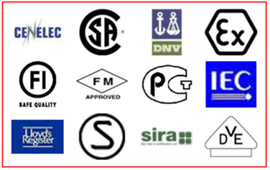
At HTUK we design and supply electric trace heating systems and temperature controlled applications. Trace heating cables and silicon heater mats can be designed for residential, commercial and industrial applications such as pipework, storage tanks/vessels, hoppers, scientific equipment, catering equipment, underfloor heating, transportation and many more.
Trace Heating (or Heat Tracing, or Surface Heating) is the method of applying heat to a body, or to a product (liquid, powder, or gas) contained within a system (pipework, vessel or equipment) for storage or transportation, in order to avoid processing problems or difficulties.
The main types of heating are Freeze protection, Process Maintenance and Raise and Maintain and the above heating types are used to provide any one of the three main applications above.
Freeze Protection
The purpose of the heat tracing is to keep the pipe or equipment above the freezing point of the product you are protecting.
Process Maintenance
The purpose of this type of application is to keep the equipment at an elevated temperature, normally above the 5°C threshold mentioned above.
Raise and Maintain
In this application, the product needs to be brought up from a start temperature up to a desired final temperature over a specified period of time.
Trace heating standards
Electric heat tracing is governed by a number of International and National Standards covering Industrial (Safe) and Industrial (Hazardous) locations. A list of the most important standards, to which many of our products are approved, are shown in the table below.
We design and supply equipment approved to all national and international standards. The current Electric heat tracingstandards are:
• IEC62395 - Electric Heat Tracing for Safe Industrial locations
• IEC60079-30 - Electric Heat Tracing for Hazardous locations
• IEC6036-4 - Electric Underfloor Heating
In addition to the base design review we provide all drawings and documentation required.
Hazardous Area Application
Design and equipment selection for use in hazardous areas will be influenced by:-
• the area classification
• the gas group
• the temperature classification and equipment selected providing an appropriate type of protection
The international standards developed especially for electric heat tracing,
• IEC62395 – for Safe Industrial locations and IEC60079-30 for Hazardous locations.
Area Classification
The probability of explosive conditions being present is defined by zone classification
• Zone 0 may have explosive gas-air mixtures present continuously or for long periods. Heat tracing is rarely, if ever, used in Zone 0 areas.
• Zone 1 may have explosive gas-air mixtures present in normal operation.
• Zone 2 may have explosive gas-air mixtures present only under abnormal conditions.
Gas Groups
Gas groups relevant to heat tracing in hazardous locations are:-
• IIA – Acetone, benzene, butane, ethane, methane, propane, etc.
• IIB - Ethylene, town gas etc.
• IIC – Acetylene, hydrogen
Temperature Classification
The maximum surface temperature of the heater must be kept below the auto ignition temperature of the explosive gas or vapour mixtures which could be present. The classifications are:-
T-Class Maximum admissible surface temp ?C
T1 = 450 °C 440 °C
T2 = 300 °C 290 °C
T3 = 200 °C 195 °C
T4 = 135 °C 130 °C
T5 = 100 °C 95 °C
T6 = 85 °C 80 °C
Types of Protection
As non-sparking devices, most heaters are likely to be approved to the concept ‘e’ – increased safety (EExe).
Sparking devices such as thermostats or circuit breakers are most commonly approved to the concept ‘d’ – flameproof (EExd), although concepts ‘i’ – intrinsic safety (EExi), and ‘p’ – pressurised apparatus (EExp) are also sometimes appropriate.
Sometimes, distribution boards and control panels can be located outside the hazardous area to avoid the need for the additional costly protection.
Heat Loss from a Pipe
Basic considerations:
- All pipes/equipment that are above the ambient temperature will experience heat loss.
- Heat loss is the loss of heat to the environment.
- If no heating is applied to the pipe/equipment it will eventually equal the ambient temperature, at which point the heat loss will be zero.
- The heat loss can be delayed by the application of thermal insulation. However, over a period of time, without heating the equipment will eventually match that of the ambient.
- To keep equipment above the ambient, it is essential to add heatingand insulationto offset the heat loss.
The basic formula to calculate heat loss from a pipe is as follows;
 Q = 2π x K x (Tp-Ta)+ sf
Q = 2π x K x (Tp-Ta)+ sf
ln(d2/d1)
Where;
Q Heat Loss (Watts/m)
K ‘k’-factor for the insulation at Mean Temperature Tm (W/m°K)
Tp Process Temperature (°C)
Ta Ambient Temperature (°C)
d2 Outer diameter of insulation
d1 Inner diameter of insulation
sf Safety Factor (typically an extra 10%)
The above calculation is based on Fourier's Law for heat loss.
For example;
Pipe Size 4” MMT 20°C
Min Ambient -15°C Insulation Thickness 1.5”
‘k’ factor 0.034 W/m°K (Fiberglass)
Q = 2 x Pi x 0.034 x (20 - -15) + 10% = 7.4767 + 10% = 13.4 W/m + 10%
ln((4”+ (2 x 1.5”)) / 4”) ln(1.75) Q = 14.7 W/m

